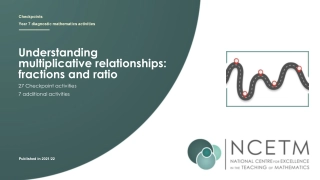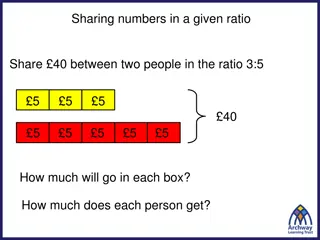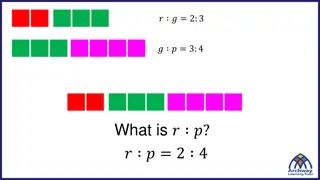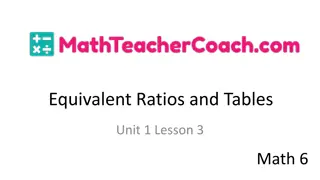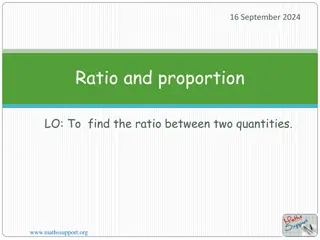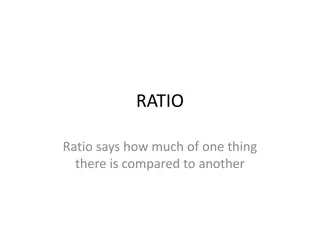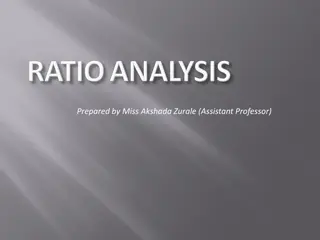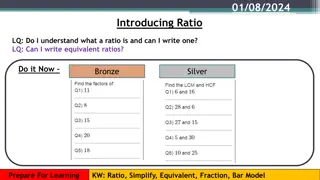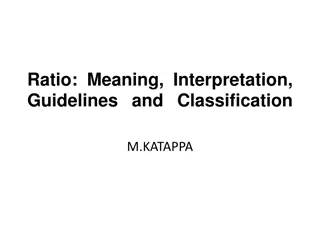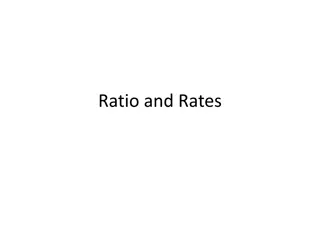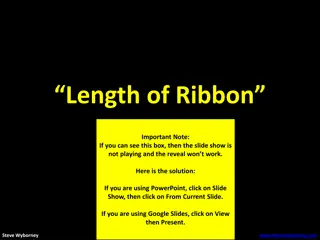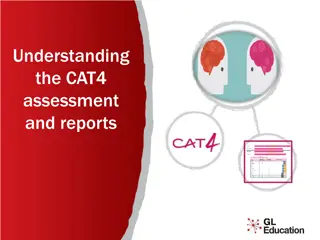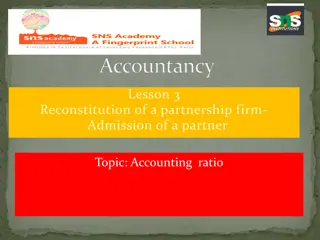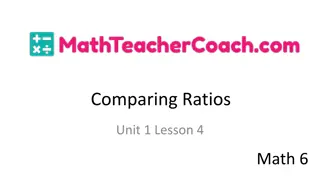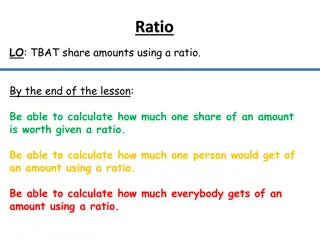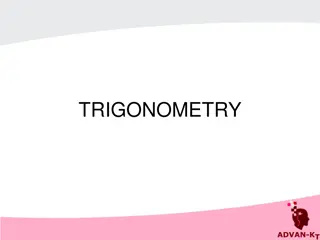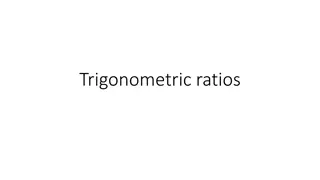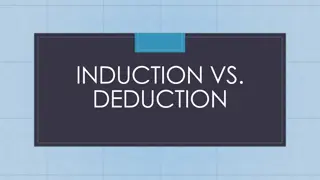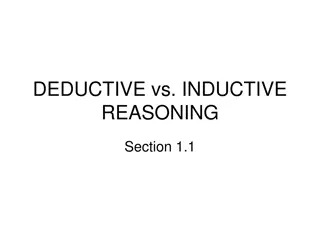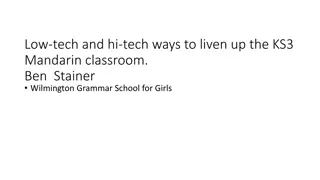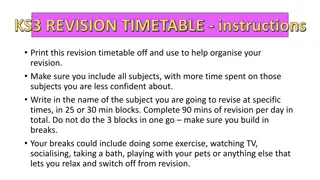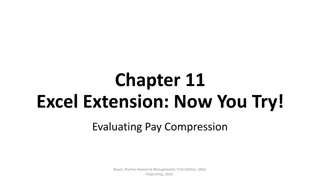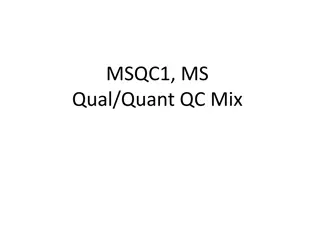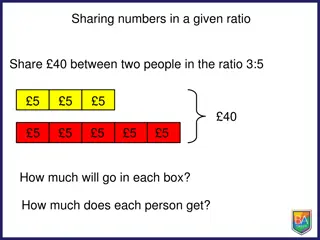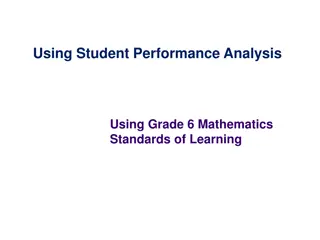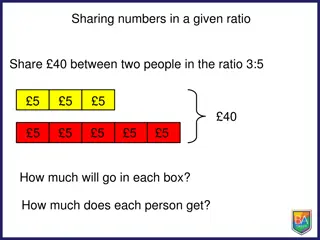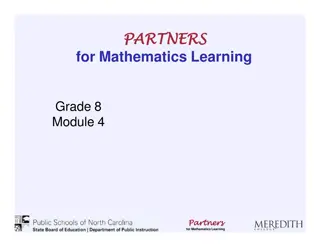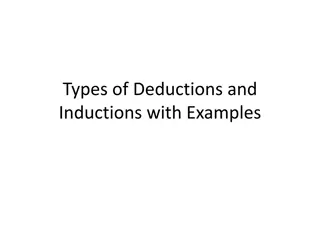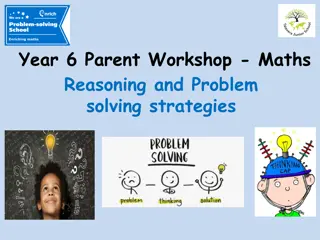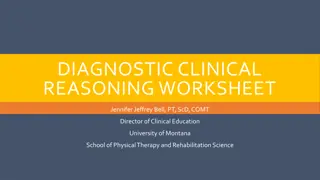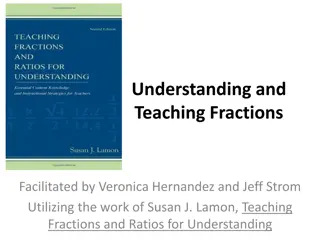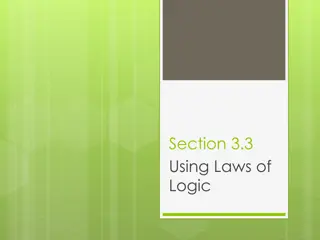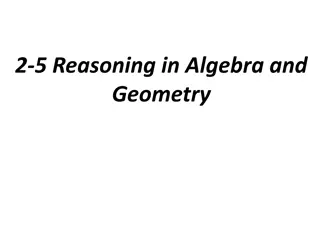KS3 Multiplicative Reasoning Project: Exploring Ratios through Buying Ribbon and Skirting Board
Dive into the exciting world of multiplicative reasoning with KS3 students as they explore ratios through practical scenarios of buying ribbon and skirting board. From drawing bars to calculating costs to making comparisons, this project engages students in problem-solving and applying mathematical concepts in real-life situations.
Download Presentation

Please find below an Image/Link to download the presentation.
The content on the website is provided AS IS for your information and personal use only. It may not be sold, licensed, or shared on other websites without obtaining consent from the author. Download presentation by click this link. If you encounter any issues during the download, it is possible that the publisher has removed the file from their server.
E N D
Presentation Transcript
NCETM: KS3 Multiplicative Reasoning Project Slides for Lessons 3ab The ratio table
Stage 1: Buying ribbon and skirting board Draw a bar to represent the ribbon and use it to work out the cost of (i) 90cm of the ribbon (ii) 340cm of the ribbon
Stage 1: Here is the bar Ellie drew to find the cost of 340cm of ribbon (i) Is Ellie s bar drawn to scale or not? (ii) In what order do you think Ellie filled in her bar?
Stage 1: The table shown below is another way of recording the information about the ribbon Make a copy of this table and fill in some other values that you know to be true.
Stage 1: The shop assistant does a quick calculation to find the cost of 340cm of ribbon. This is shown below: How does this table compare with the one you drew in part c? And in part d? Draw a table like the shop assistant did to help you work out the cost of 620 cm of this ribbon
Stage 1: Ellie calls at the DIY store. She has a builder coming to put new skirting board and beading in her bedroom. She chooses the ogee style: The ticket details for this skirting board are shown in the box above. Which parts of the skirting board do the measurements refer to?
Stage 1: The distance around the walls of Ellie s bedroom is 20m. Ellie can t decide whether to do her calculations in metres, centimetres or millimetres Use this ratio table (or one of your own) to work out how much it will cost Ellie to buy enough skirting board to go around her bedroom walls.
Stage 1: Ellie chooses the beading shown below. She decides to bead only the two outside walls of the room as these are the draughtiest. This is a distance of 10.8m. Use a ratio table to work out how much it will cost Ellie to buy enough beading to cover the two outside walls.
Stage 2: Buying in bulk: The Open later store. Craig is the manager of an Open later convenience store. Every Monday morning he does a stock check and places orders for products he is running short of. Supplies of pure orange juice are running low. The cartons of juice come in packs of 12. Craig uses a ratio table to work out how many cartons of juice he will get if he orders 19 packs. His working is shown below:
Stage 2: Craig started his ratio table like this: Make a copy of the start of Craig s ratio table and use it to find the number of drinks in 28 packs.
Stage 2: Tins of soup come in trays of 9 Craig starts a ratio table as follows: a) What else do you know? Copy the table and fill in some other values b) Find the number of tins in 35 trays.
Stage 2: Ice lollies come in boxes of 15 6a) Use a ratio table to find the number of bars in 18 boxes. b) Compare your ratio table with other students. Is there only one way of finding a correct solution?
Stage 3: At the wholesalers Every fortnight Craig goes to the wholesalers to restock on supplies. Craig needs to restock on his supply of chocolate bars. He looks at the brands available to see which is the best buy. A box of 14 bar costs 8.40 A box of 20 bars costs 14.50 Craig draws two ratio tables and wonders how he can compare the prices:
Stage 3: At the wholesalers a) Copy the ratio tables and fill in some other quantities that you know the cost of. b) Can you figure out which brand is cheaper? How did you do it?
Stage 3: Craig is wondering which brand of batteries to go for A box of 24 batteries costs 14.40 A box of 32 batteries costs 16.60 a) Make two ratio tables and fill in some other quantities of batteries that you know the cost of. b) Which brand is cheaper?
Stage 3: The wholesale prices for two brands of butter are as follows: A box of 36 packs costs 45.00 A box of 40 packs costs 48.00 a) Make two ratio tables and fill in some other quantities of butter that you know the cost of. b) Which brand is cheaper?
Stage 3: The wholesale prices for two multipacks of crisps are as follows: Red brand : 18 packs cost 2.70 Blue brand: 16 packs cost 2.40 a) Make two ratio tables and fill in some other quantities of crisps that you know the cost of. b) Which brand is cheaper?
Stage 4: The Summer Fair The local primary school are preparing for their summer fair. The head of the PTA asks Craig if he can order some sweets and crisps from the wholesalers for the PTA to sell at the school fair. Below are the details of what the PTA would like Craig to buy: Number in a pack Number required Packets of crisps Wafer biscuits Chocolate bars Ice lollies Sort drinks Strawberry laces 16 12 25 15 8 14 400 350 650 280 600 180
Stage 4: Craig uses a ratio table to work out how many multipacks of crisps he will need to order to get 400 packets of crisps. This is shown below a) How did Craig start off his ratio table b) Explain how he filled in the numbers in the other columns. c) How did he know when to stop?
Stage 4: The Summer Fair Draw ratio tables to help you work out how many packs Craig will need to buy of the other items in the list. Number in a pack Number required Packets of crisps Wafer biscuits Chocolate bars Ice lollies Sort drinks Strawberry laces 16 12 25 15 8 14 400 350 650 280 600 180


